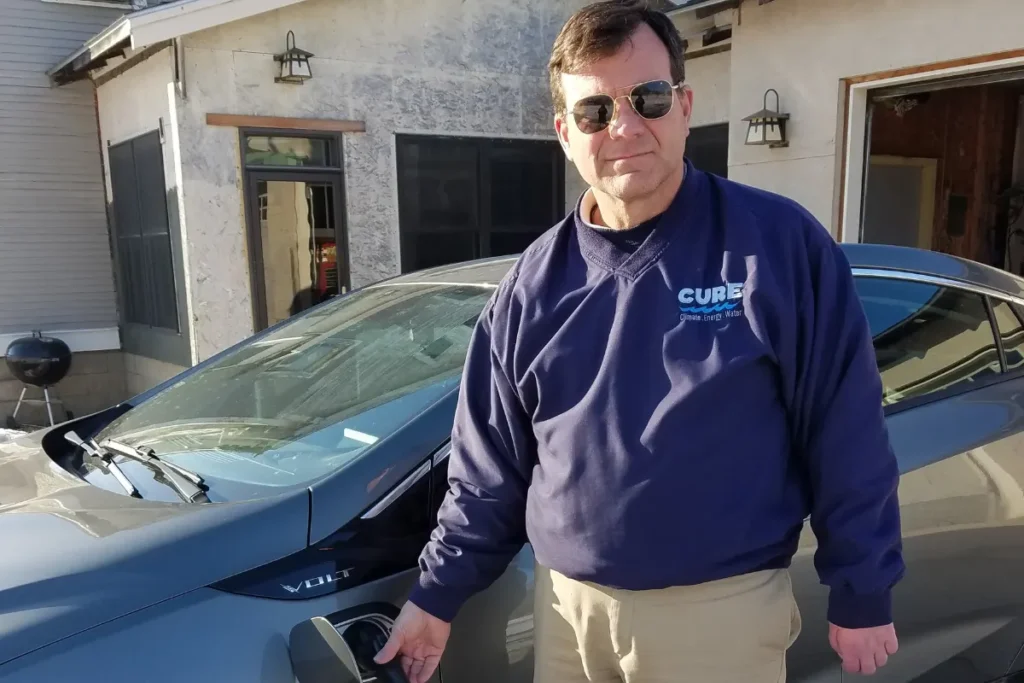There are many misconceptions about Clean Cars Standards and who will benefit from them. In reality, Minnesota Clean Cars Standards are straight forward measures that will reduce annual climate pollution in Minnesota by up to 2 million tons, help clean up our air, improve our health, increase vehicle choice, and help all Minnesotans be part of an equitable clean transportation future—especially those in rural communities.
Many rural Minnesotans want the state to take action on climate pollution. We see the climate crisis as a long-standing issue even as we continue to face the COVID-19 pandemic and economic recession. Immediate bold action is required to tackle these critical issues—Clean Cars Standards are part of the solution. The long-term health of our rural communities and people depend on it.
A few of the reasons why rural Minnesotans want Clean Cars Standards—
Long commutes offer an opportunity to save money and reduce emissions
Long commutes are an everyday reality for rural Minnesotans, and a study from the Union of Concerned Scientists found that those same long commutes are what allow rural residents the opportunity for bigger savings. Pete Kennedy, an engineer who lives in Murdock, lives this reality every day. He has a 70-mile round trip daily commute that he makes in his plug-in 2017 Chevy Volt. He wants Minnesota to adopt Clean Cars Standards, saying,
“It only makes sense to put the highest mileage vehicles where we drive the most miles, rural Minnesota, and the Clean Cars Standards would do just that.”
Kennedy continued, “The Volt is a plug-in hybrid with a battery for commuter length trips and a gasoline engine for longer trips. It’s not an expensive luxury car. We bought it because it was affordable, and we needed a dependable car that gets us where we need to go at a very low cost.” By adopting the Clean Cars Standards, Minnesota will jumpstart its buildout of electric vehicle charging infrastructure across the state, making it easier for Minnesotans like Pete to drive further.
Rural Minnesotans want more vehicle choice
In rural Minnesota, people are frustrated by how hard it currently is to buy an electric car. Mark Peterson from New London is one of those people. Peterson noted, “I have no intention of buying a gas-powered car again. When I go to buy my next electric vehicle the offerings in Minnesota will make it difficult. Mills Nissan in Willmar does not carry the Leaf. There is clearly a demand for EVs in Minnesota, but the dealers and manufacturers are intentionally limiting our options.”
Poor air quality is everywhere, not just the Metro
Poor air quality is killing thousands of Minnesotans each year, even in rural Minnesota. This is an often-overlooked reason why Minnesota needs strong auto emission standards. A 2019 report from the Minnesota Pollution Control Agency and the Minnesota Department of Health found that rates of death attributable to air pollution were higher in rural areas than cities and was particularly bad in southern Minnesota and along the state’s border with South Dakota.
We shouldn’t be pitted against each other because of geography.
Our neighbors across the state are never our enemy.
Attempts to use Clean Cars Standards as a wedge between populations rather than addressing an issue and solving the problem harms us all. Minnesotans know that by embracing clean energy technology and uniting against the climate crisis, we all come out ahead—now more than ever.


